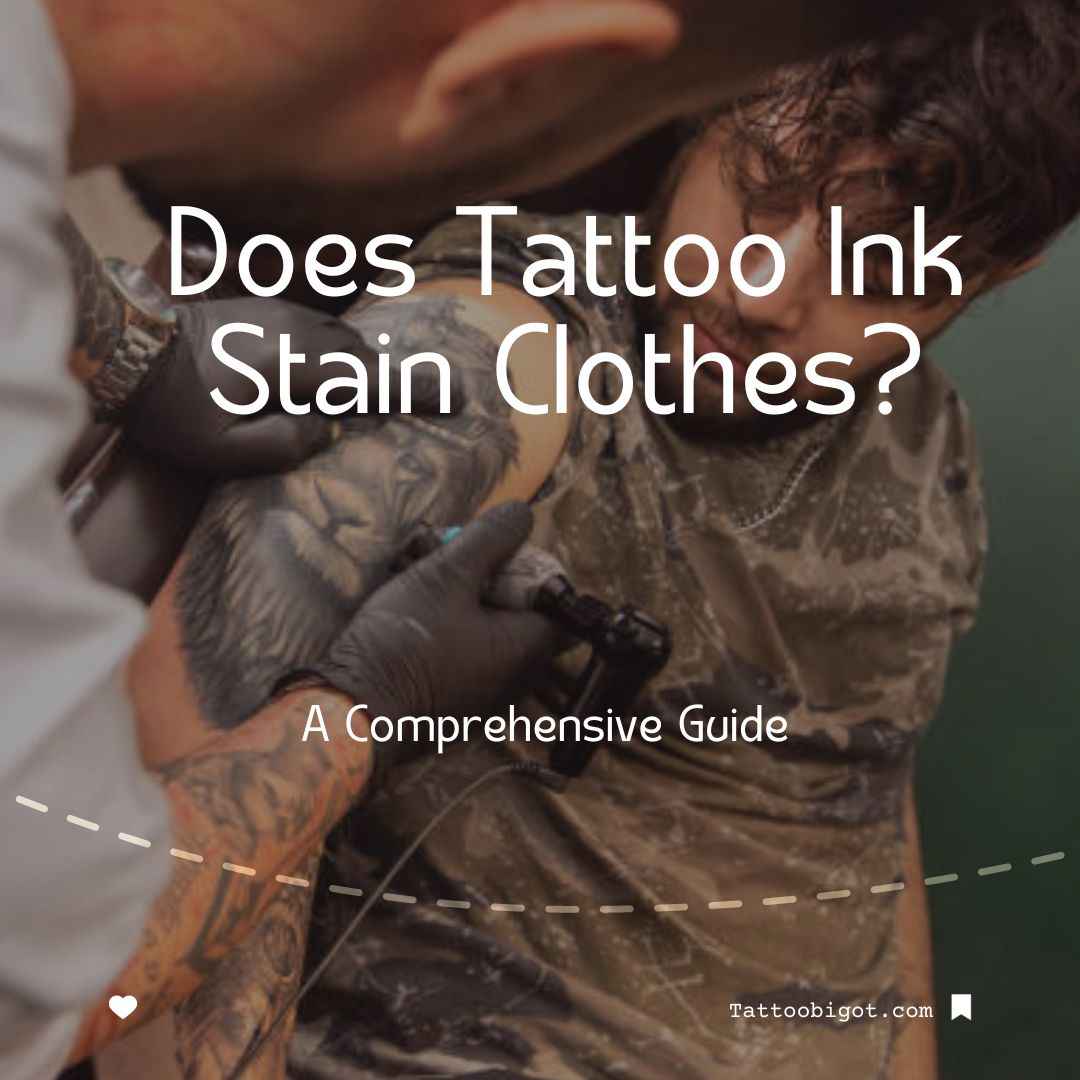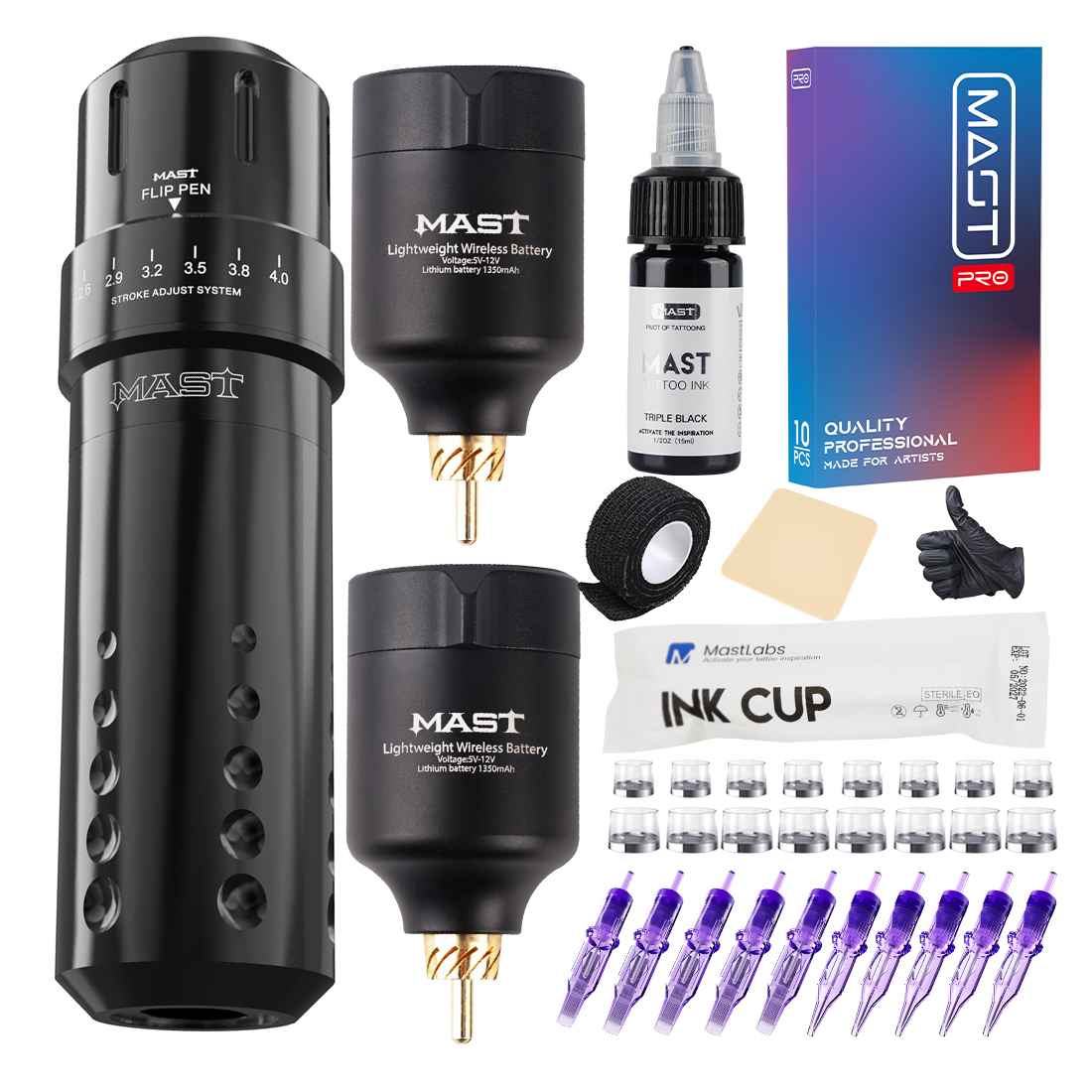Getting a new tattoo is an exciting experience. However, one concern many people have is whether the ink from their fresh tattoo will stain their clothes.
Understanding how to care for a new tattoo and prevent staining can help keep your clothes ink-free.
In this comprehensive guide, we’ll cover everything you need to know about tattoo ink staining clothes. We’ll answer the question, “Does tattoo ink stain clothes?”
How Tattoo Ink Works
First, it helps to understand what tattoo ink is made of. Modern tattoo inks are pigments suspended in a carrier solution.
Common pigments include organic compounds like carbon black and inorganic compounds like titanium dioxide. The carrier solution keeps these pigments evenly dispersed and allows them to be injected into the skin.
Once injected under the epidermis layer of the skin, the pigments sit in a pocket created by the tattoo needle.
Here they are locked into the dermis by fibroblasts that form around the pigment particles during healing. This gives tattoos their permanence and allows the colors to remain vibrant.
What Causes Tattoo Ink Stains
There are a few ways tattoo ink can transfer from skin to clothing and other surfaces:
– Excess Ink: When a tattoo is fresh, there is excess ink on the surface that has not absorbed into the skin yet. This excess ink can easily transfer to clothing and stain the fabric.
– Flaking Skin: As the outer layer of skin heals, it can flake off, taking bits of tattoo ink with it. Flakes of skin with ink particles can deposit on clothing and leave stains.
– Sweat and Moisture: Sweat and moisture soften and loosen healing skin cells on the surface of the tattoo. This allows excess ink to work its way out and potentially onto clothing.
– Friction and Abrasion: Any friction or abrasion against a healing tattoo can pull ink up into the outer skin layers. Clothing rubbing on the tattoo may pick up this displaced ink.
Also Read: How to Remove a Tattoo With Milk: Examining the Method
When is the Highest Risk of Getting Tattoo Ink Stains?
Most of the risk of staining clothes with tattoo ink is highest in the first 1-2 weeks while the tattoo is healing.
During this time there is excess ink on the surface and the most skin cell shedding and flaking occurs. However, staining is still possible after healing:
– 2-6 Weeks: Risk decreases but is still moderate as the final scab falls off and final healing happens.
– 6 Weeks to 6 Months: Slight risk remains as sweat and friction can still loosen healed skin and ink particles.
– After 6 Months: Very little risk but occasional staining possible through abrasion or heavy sweating.
In most cases, being careful and using the right precautions will prevent any staining after the first couple weeks. Properly healed tattoos do not pose much risk of releasing ink.
Also Read: How to Remove Glitter Tattoos at Home: A Complete Guide
What Fabrics Are Most Prone to Staining?
Certain types of fabrics and materials are more prone to absorbing and holding onto tattoo ink stains:
– Natural Materials: Natural fabrics like cotton, wool, silk, and linen have fibers that readily absorb ink stains. The stains can become permanently set.
– Dyed Materials: Dyed fabrics like t-shirts, underwear, and socks act like sponges, picking up and holding onto pigment particles.
– Light Colors: Any light colored clothing shows stains more noticeably. The darker tattoo ink stands out clearly against light fabric.
– Delicates: More delicate and porous materials like lace, nylon, spandex, and rayon are susceptible to staining.
– Rough Textures: Fabrics with more texture have more surface area for ink to get trapped in. Terry cloth, knits, and velvet are prone to holding stains.
On the other hand, tightly woven fabrics and synthetic materials like polyester are more stain resistant. Darker clothing also hides tattoo ink stains better.
Also Read: How to Get Rid of a Lip Tattoo: A Complete Removal Guide
Tips to Prevent Tattoo Ink Transfer
The good news is that staining from a new tattoo is largely preventable. Here are some tips to keep clothes ink-free while your tattoo heals:
– Use Old Sheets: Use old sheets and towels while sleeping as linens can pick up excess ink. Protect car seats and furniture as well.
– Wear Loose Clothing: Tight clothes increase contact and friction with the tattoo. Choose loose, breathable fabrics.
– Avoid Heavy Exercise: Sweating a lot can cause ink to leach out. Avoid strenuous activity for 2-3 weeks.
– Wash Gently: Use a mild, fragrance-free cleanser while healing. Avoid scrubbing the area vigorously.
– Pat Dry: Gently pat the area dry after washing instead of vigorous rubbing with a towel.
– Use Barriers: Cover the tattoo with non-stick bandages or plastic wrap as a barrier when wearing clothes.
– Wait Before Wearing Delicates: Avoid lingerie, silk, nylon, and other delicates near the tattoo for at least a month.
– Watch White Shirts: Skip wearing white t-shirts and tank tops until tattoo is fully healed.
– Check Clothing: Inspect light colored clothes for any ink stains after wear and wash promptly.
– Follow Aftercare: Properly cleaning and moisturizing helps tattoo heal faster and reduces staining.
Also Read: How to Get Tattoo Ink Out of White Clothes: A Complete Step-by-Step Guide
What to Do If Ink Transfers
Even with precautions, some ink may still transfer onto clothing. If staining occurs:
– Act Fast: Treat stains as soon as possible. Ink is harder to remove after it sets into fabric.
– Flush With Water: Hold the stain under cold running water to flush out excess pigment.
– Use Soap: Gently rub a small amount of fragrance-free soap into the stain. Rinse thoroughly.
– Avoid Scrubbing: Aggressive scrubbing can further set the stain. Handle fabrics gently.
– Try Saline: For more stubborn stains, soak in saline solution. The salt helps draw out ink.
– Use Hydrogen Peroxide: Lightly sponge hydrogen peroxide onto the stain and rinse. This can help lift pigment.
– Try Isopropyl Alcohol: Use a cotton ball to gently apply rubbing alcohol on the stain. Check fabric compatibility first.
– Avoid Bleach: Do not use bleach as it can set tattoo ink stains and damage fabrics.
– Repeat Steps: For tough stains, repeat steps like peroxide, alcohol, and saline as needed.
– Wash Normally: Once stain is lightened, wash fabric normally with detergent. Air dry in sunlight.
– Use Color Run Remover: Commercial products like color run removers can help draw more stain out.
– Accept Some Stain: Light residue may remain on delicate fabrics. This often fades over time.
Also Read: Can You Remove Red Tattoo Ink? A Complete Guide
Dealing with Tattoo Ink Stains on Valuable Items
For valuable and delicate items like wedding dresses, you may want to take extra steps:
– Blot Stains: Immediately blot fresh stains with a clean towel to absorb excess ink.
– Bring to Cleaners: Take the item to professional dry cleaners. They have stronger stain removal solutions.
– Point Out Stains: Show them the stains so they can pretreat them directly.
– Expect Extra Costs: Stain treatment or re-dyeing may incur additional costs.
– Request a Test: Have them test stain removers on an inconspicuous area first to check for damage or discoloration.
– Be Patient: It may take multiple cycles to lighten and remove difficult ink stains.
While tattoo ink stains can be worrying, don’t panic. In most cases, stains either come out completely or fade significantly over time. With the right precautions and care, you can keep your new tattoo and your wardrobe ink-free.
Conclusion: Does Tattoo Ink Stain Clothes
So, does tattoo ink stain clothes? Getting ink stains on your clothes from a new tattoo is a common concern. However, with proper aftercare and precautions, staining can be minimized or avoided altogether.
Wearing loose, dark fabrics and creating barriers over the tattoo are key to keeping excess ink from transferring during the first few weeks of healing. If stains do occur, acting quickly using gentle stain removal techniques can lift most ink.
While delicate fabrics can be more challenging, professional dry cleaning can help erase tough stains without damage. With a careful approach, you can keep your fresh tattoo vibrant and your wardrobe looking bright.
FAQs on Does Tattoo Ink Stain Clothes
How long does it take for a tattoo to stop staining?
With proper aftercare, the risk of staining significantly decreases after about 2-6 weeks. As the tattoo fully heals, very little ink will transfer.
Can you ruin a tattoo by scrubbing off stains?
Yes, aggressively scrubbing a new tattoo can pull out ink and cause fading. Gently blot stains instead and handle the tattoo delicately as it heals.
Does Vaseline help prevent tattoo stains?
Yes, applying a thin layer of fragrance-free Vaseline can create a protective barrier to keep excess ink contained.
Will tattoo ink come out of upholstery?
It can be very difficult to remove ink stains from upholstery and carpeting. Immediately blot fresh stains and use professional carpet cleaning methods. Some faint staining may remain.
Can you bleach tattoo stains out of sheets?
No, avoid using bleach as it can further set tattoo ink stains. Use stain pretreaters, peroxide, and saline instead to gently lift stains.
Can dry cleaners remove tattoo stains?
Yes, professional dry cleaners have access to stronger stain removal solutions. Point out any ink stains so they can be directly pretreated.
How do you get tattoo ink stains out of a mattress?
Spot clean stains immediately with soap and water. Use an enzyme cleaner or hydrogen peroxide. A mattress protector can also help prevent staining.






